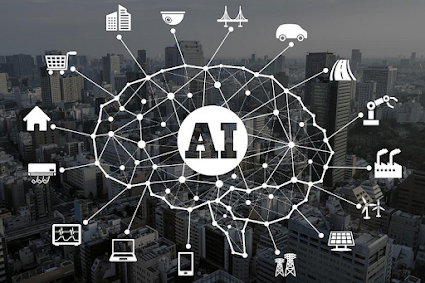Numbers That Build Intelligence
Maths and Statistics for AI – Why They Matter
Why Do We Need Math in AI?
AI may seem like magic, but underneath it all, it's powered by math and statistics. These aren't just side topics—they form the core of how AI understands, learns, and makes decisions. Whether you're training a machine learning model, building a neural network, or analyzing big data, math is always working behind the scenes.
Let’s explore each mathematical pillar one by one to understand what role they play in AI.
1. Linear Algebra: The Language of Data
Linear Algebra is the foundation of data representation in AI. AI systems process a lot of data—images, speech, text—and all this data is turned into numbers, most commonly in the form of vectors and matrices.
-
Vectors help represent data points (like a sentence or image pixel values).
-
Matrices are used to perform operations on multiple data points at once.
-
In neural networks, weights, inputs, and outputs are often represented as matrices.
For example: When an AI recognizes a face in an image, it's using linear algebra to manipulate pixel values to extract features like edges and shapes.
Topics to focus on:
-
Vectors and vector spaces
-
Matrices and matrix multiplication
-
Eigenvalues and eigenvectors
-
Dot product and cross product
2. Probability & Statistics: Learning from Uncertainty
AI deals with uncertainty—what’s likely to happen? What’s the probability that an email is spam? This is where probability and statistics come in.
-
Probability helps AI make predictions and handle randomness.
-
Statistics helps analyze data and find patterns.
In simple terms: If AI is trying to make a decision, probability tells it how likely each option is, and statistics helps it learn from past decisions.
Topics to focus on:
-
Probability distributions (normal, binomial, etc.)
-
Bayes' Theorem (core for many ML algorithms)
-
Conditional probability
-
Descriptive statistics (mean, median, mode, standard deviation)
-
Inferential statistics (hypothesis testing, confidence intervals)
3. Calculus: Powering Learning and Change
When AI models learn, they adjust their internal settings (called parameters) to reduce errors. Calculus—especially differential calculus—is how they do this.
-
Derivatives help measure change: How does the output change as we tweak a value?
-
Gradients help AI know which direction to move to improve accuracy (like climbing down a hill to reach the lowest point).
Calculus is especially important in neural networks and gradient descent, a popular algorithm used in training models.
Topics to focus on:
-
Derivatives and partial derivatives
-
Chain rule
-
Gradient descent
-
Optimization with loss functions
4. Optimization: Making AI Smarter
AI doesn’t just want to make decisions—it wants to make the best decision. Optimization is about finding the best solution among many possibilities.
In machine learning, optimization is used to:
-
Minimize the error in predictions
-
Choose the best parameters for the model
-
Improve performance with limited resources
🔍 Topics to focus on:
-
Cost/loss functions
-
Convex vs non-convex optimization
-
Gradient descent and variants (SGD, Adam, RMSProp)
-
Constraints and penalty methods
Do You Need to Be a Math Genius?
Absolutely not.
You don’t need to be an expert in every formula, but understanding the core concepts can make your AI journey clearer and more powerful. If you're a beginner, focus on building an intuitive understanding first, and then dive deeper as needed.
Next Steps
In the upcoming blog series, we’ll dive into these individual topics—like Linear Algebra, Probability, and Optimization—with simple explanations, examples, and how they’re used in real AI models.
Stay tuned, keep learning, and remember—math is your AI superpower!


.png)
.jpg)
Comments
Post a Comment